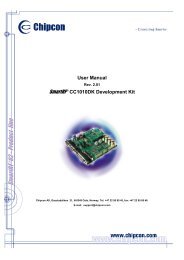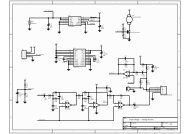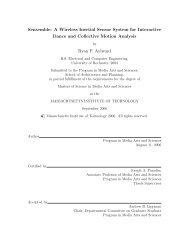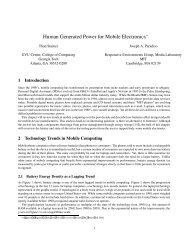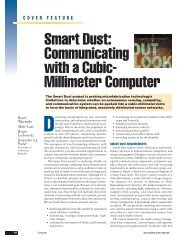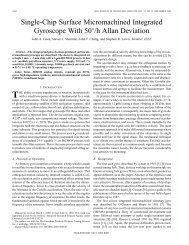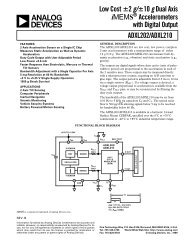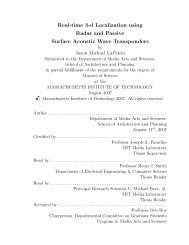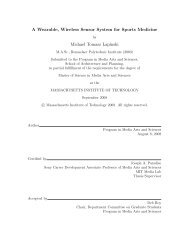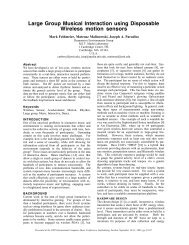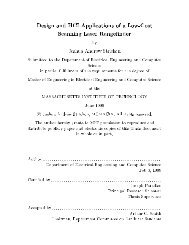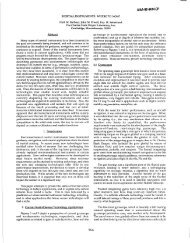S.N.A.K.E.: A Dynamically Reconfigurable Artificial Sensate Skin ...
S.N.A.K.E.: A Dynamically Reconfigurable Artificial Sensate Skin ...
S.N.A.K.E.: A Dynamically Reconfigurable Artificial Sensate Skin ...
You also want an ePaper? Increase the reach of your titles
YUMPU automatically turns print PDFs into web optimized ePapers that Google loves.
8. Teardrops and filleting were added to all pads and vias.<br />
9. Components were also chosen to be as small as possible, so that bend radius is not<br />
limited by this. If components are large, then the substrate will not be able to bend<br />
without components breaking off.<br />
There is one last thing to mention. Because of the necessary number of layers and the<br />
presence of surface mount components on both layers of the board, the nodes will certainly<br />
not be as flexible as a natural skin, plus are not, of course, elastic and 3-axis conformable.<br />
These and other results will be mentioned in Chapter 5.<br />
3.3.2 Power Circuitry<br />
As we mentioned in the previous subsection, component selection was made in such a way so<br />
that component size and orientation would not much hinder the bending of the circuit. In<br />
general, this means selecting components as small and compact (not elongated) as possible,<br />
otherwise there would be a risk of components breaking off the substrate as shown in Figure<br />
3-11(b).<br />
Referring back to the design principles of section 3.1, one of the key points is to have a<br />
reliable network. Reliability in the case of network power distribution is gained by providing<br />
each node with their own power supply or individually wiring each node to a centralized one.<br />
Connecting each node to a central power supply would be a step back in the design, because<br />
it would mean that each node has to be wired, which is exactly what we are trying to avoid<br />
by having processing power in each node. The other option would be to have a coin-cell<br />
battery in every node, but these are generally not rechargeable, bulky in relationship to<br />
node size and would hinder flexing motion.<br />
The next best option is to provide as many redundant power and ground connections<br />
throughout the network as possible. This is the option implemented in the SNAKE project,<br />
and therefore every node has a power and ground connection to each one of their immediate<br />
neighbors (North, South, East, West). Since the <strong>Skin</strong> Network topology is dictated by the<br />
54



